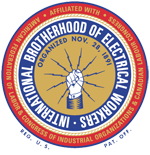|
February 7, 2021
WORK SAFE!
With the snow and extremely cold weather hitting our area we remind all members to work safely when helping those we serve. All members should review the safety documentation given to them by their employers.
We All Must Remember
No job is so important and no service is so urgent that we cannot take the time to perform our jobs safely.
Please check on your family, friends and neighbors to make sure they are safe and forward this information to others who may be at risk.
OSHA provides many safety tips for workers who work in
extremely cold conditions.
- Monitor your physical condition and that of your coworkers
- Dress appropriately for the cold
- Stay dry in the cold because moisture or dampness, e.g. from sweating, can increase the rate of heat loss from the body
- Keep extra clothing (including underwear) handy in case you get wet and need to change
- Drink warm sweetened fluids (no alcohol)
- Use proper engineering controls, safe work practices, and personal protective equipment (PPE) provided by your employer
Cold Stress Can Be Prevented
Prolonged exposure to freezing or cold temperatures may cause serious “cold stress” health problems such as trench foot, frostbite and hypothermia. In extreme cases exposure can lead to death. Danger signs include uncontrolled shivering, slurred speech, clumsy movements, fatigue and confused behavior. If these signs are observed, call for emergency help. OSHA provides a tips and recommendations on how to be protected and combat and prevent cold stress illnesses and injuries. Read them here.
Dressing Properly for the Cold
When cold environments or temperatures cannot be avoided dressing properly is extremely important to preventing cold stress.
- Wear at least three layers of loose fitting clothing. Layering provides better insulation.
- An inner layer of wool, silk or synthetic (polypropylene) to keep moisture away from the body. Thermal wear, wool, silk or polypropylene, inner layers of clothing that will hold more body heat than cotton.
- A middle layer of wool or synthetic to provide insulation even when wet.
- An outer wind and rain protection layer that allows some ventilation to prevent overheating.
- Tight clothing reduces blood circulation. Warm blood needs to be circulated to the extremities. Insulated coat/jacket (water resistant if necessary)
- Knit mask to cover face and mouth (if needed)
- Hat that will cover your ears as well. A hat will help keep your whole body warmer. Hats reduce the amount of body heat that escapes from your head.
- Insulated gloves (water resistant if necessary), to protect the hands
- Insulated and waterproof boots to protect the feet
Read OSHA’s suggestions on how to dress in cold weather here.
|

